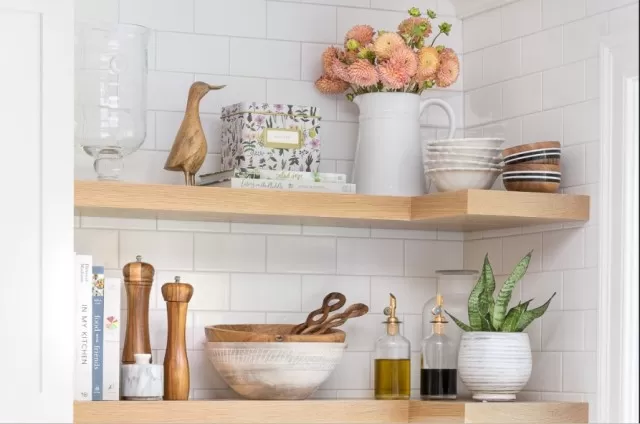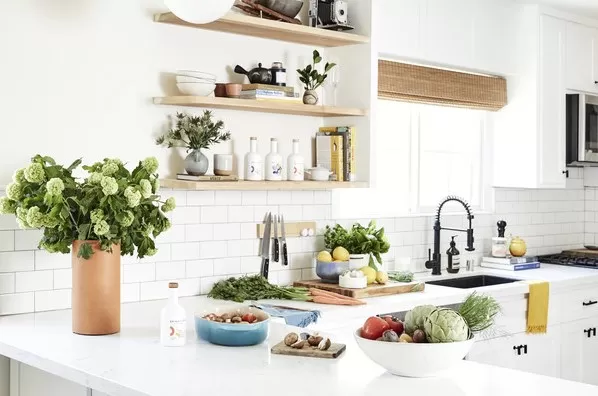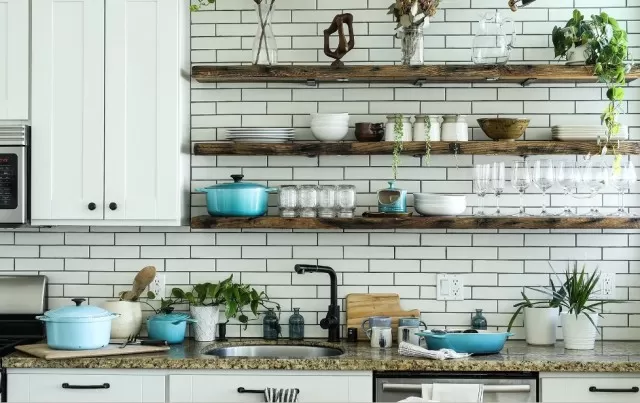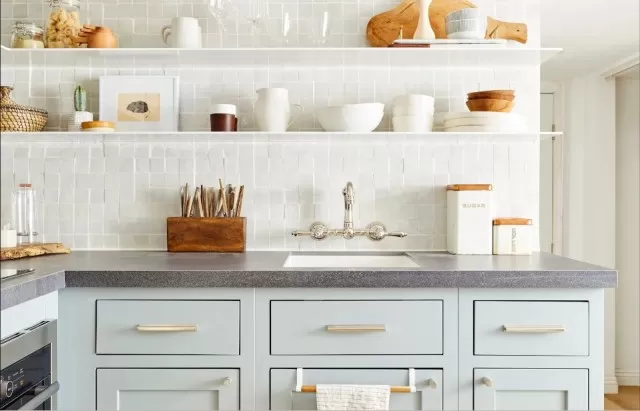We’re here to help you revolutionize your kitchen cleaning routine, making it faster, smarter, and more effective than ever before!
Sick of dealing with sticky countertops, grimy floors, and dirty appliances in your kitchen? We’re here to help you revolutionize your kitchen cleaning routine, making it faster, smarter, and more effective than ever before!
Kitchen cleaning tips Guidebook

01 Maintaining clean kitchen countertops.
Maintaining clean kitchen countertops is essential for a functional and hygienic workspace.
Start by decluttering your countertops, putting away small appliances, Dirty Dishes, and other items. Before wiping down and disinfecting, consider the material of your countertop, as different surfaces require different cleaning methods.
In general, a solution of warm soapy water or diluted white vinegar will work wonders.
02 Cleaning kitchen floors.
When it comes to cleaning kitchen floors, a good old-fashioned broom is your best friend.
Begin by sweeping along the baseboards and gathering dirt into piles as you go. Keep a trash bin nearby for easy disposal of debris.
It’s a good idea to keep children and pets away from the kitchen while you sweep to prevent crumbs from spreading. Additionally, mop the kitchen floors every week to remove grime and buildup.

03 Clean kitchen appliances.
Knowing how to clean kitchen appliances is crucial for maintaining a pristine and fingerprint-free kitchen.
Neglecting to clean your appliances regularly can lead to unpleasant odors, mold growth, and sticky surfaces. Vinegar is an excellent natural cleaner for the refrigerator, dishwasher, and stainless-steel appliances.
For the microwave, simply heat a bowl of water until it boils, then wipe away loosened food particles with a cloth.
04 Keeping your stovetop clean.
Keeping your stovetop clean is essential, as spills and splatters are inevitable during cooking.
Ideally, you should clean your stovetop after each use to prevent stains from setting and becoming difficult to remove. However, different types of stoves require different cleaning methods.
For a glass stovetop, use a single-edged scraper on tough stains and a glass stove cleaner for the rest of the surface. When cleaning a gas stovetop, start with the grates, wiping them clean or soaking them in hot soapy water.
For electric stovetops, remove the coil burners, wash them with warm, soapy water, and wipe down the rest of the surface.

05 Stainless steel appliances.
Stainless steel appliances can be a challenge to clean, but with the right techniques, you can keep them looking shiny and spotless.
For everyday cleaning, use a slightly damp microfiber cloth to wipe down your stainless-steel surfaces. Add a small amount of Dish Soap for stubborn smudges.
Remember to wipe dry with a clean cloth to avoid streaks. For tougher spots, wet a cloth with warm distilled white vinegar, place it on the spot for 30 minutes and then scrub clean, always following the grain of the stainless steel.
06 Kitchen cabinets.
Kitchen cabinets can accumulate fingerprints, grease, and dirt, which can detract from the overall appearance of your kitchen.
To clean kitchen cabinets, wipe them down weekly using a multi-purpose cleaner and a microfiber cloth. For more thorough cleaning, consider doing a seasonal deep clean that includes scrubbing shelves, doors, and hardware.
Use a cleaning toothbrush to reach into crevices if necessary.

07 Kitchen sink.
Your kitchen sink deserves regular cleaning after each use.
Simply give it a quick scrub to remove any residue and food particles. The choice of cleaning product depends on the material of your sink.
baking soda works well for stainless-steel sinks, while a mixture of hydrogen peroxide and baking soda is effective for white or porcelain sinks. After cleaning the sink basin, remember to polish the faucet.
And don’t forget to occasionally deep-clean your kitchen sink by cleaning the sink drain and disposal.
08 Kitchen sponge.
Sanitizing your kitchen sponge is essential for maintaining a clean and bacteria-free kitchen.
To keep your sponge free from mold and bacteria, learn different methods for cleaning it, such as using vinegar, bleach, or boiling water.
09 Black appliances.
Black appliances may look sleek and contemporary, but they are notorious for showing dirt and spills.
To clean black appliances, use a mixture of vinegar and water. Any leftover solution can be wiped clean using warm, soapy water and a microfiber cloth.
Remember to dry the surfaces quickly to prevent visible streaks.
By following these expert tips and implementing smarter cleaning techniques, you can transform your kitchen into a sparkling, inviting space where you can enjoy cooking and dining with peace of mind.
*The information is for reference only.